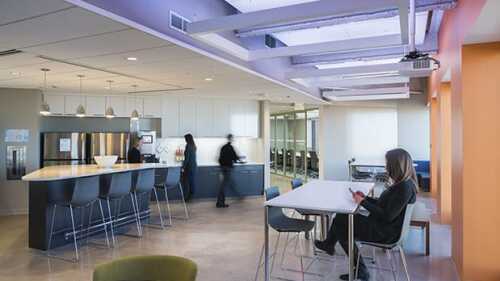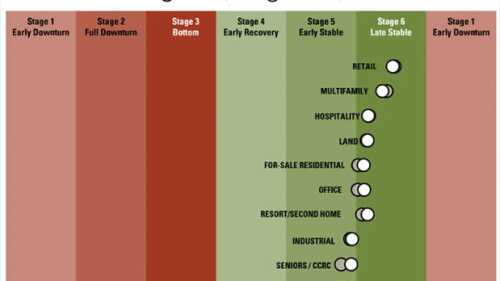Real Estate Trends
A new definition of what constitutes a 100-year flood promises to alter how commercial and residential properties in Austin are built and protected, panelists said at a ULI Austin event in December. This effort arose from new data indicating that major storms in Texas dump more rain than had been previously estimated, with more than 2,000 buildings being added to the designated floodplain.
Millennials living in the nation’s capital and its close-in suburbs can be characterized as “committed urbanists,” according to a just-released ULI Washington survey. This new study, which updated a 2015 survey, included more households with children—an increase from 12 to 20 percent. Almost half (49 percent) of respondents are married or partnered—up from 39 percent in 2015. Homeownership has increased from 28 to 33 percent. And median income has increased over 11 percent, exceeding the national growth rate.
A first-time gathering of ULI product council members—drawing attendees from councils focused on multifamily housing and affordable and workforce housing—convened at the 2018 ULI Fall Meeting in Boston to marshal ideas from some of the industry’s leading minds. For near-term action, participants sounded a call for creating a national playbook for local and state-level implementation, a compendium of strategies employed successfully in jurisdictions across the United States that could be adopted elsewhere.
A panel discussion at the ULI Europe Real Estate Forum 2018 in Dublin focused on a key question facing the development industry: how to future-proof urban redevelopment in an era of constant change by including open space and housing while embracing walkability.
One of the most difficult challenges for those seeking to adopt emerging technologies in commercial real estate is justifying the cost of implementing such measures. A recent ULI event in Boston highlighted the benefits of the evolving standards on health and wellness by five industry practitioners.
According to a new report from Cushman & Wakefield, flexibile office space could triple in size in the coming years, representing 5 to 10 percent of office inventory in many markets. Investors also believe coworking is well positioned to weather an economic downturn.
Implementing strategies at the building, development, and community levels can preserve functionality despite extreme weather.
According to a survey by RCLCO, sentiments about the real estate conditions in the U.S. remain at a relatively high level, but slightly below where they were six months ago. Just over one-half (51 percent) of RCLCO’s Mid-Year 2018 Sentiment Survey respondents say U.S. real estate market conditions are moderately or significantly better today than they were 12 months ago, five percentage points lower than in the year-end 2017 survey.
Important tax credits were preserved in the new federal tax law, but lower corporate rates shrink their value.
Panelists at the ULI Washington Trends Conference in April said having a more diverse staff benefits the bottom line and addressed some of the ways they are trying to attract talent to the industry. “If everyone around the table looks the same, it’s hard to get outside of that box,” said Jodie McLean, chief executive officer of EDENS and a ULI trustee.




